What's Up With These Grown Ups Playing With Little Airplanes
- Jorge A. Zajia

- Oct 15, 2023
- 10 min read
Updated: Oct 25, 2023
"Airplane Model"
To a lot of people the term “airplane model” likely evokes a large replica of an aircraft - certainly larger than the small toy airplanes that are found in toy stores, airport gift stores, and the toy section of supermarkets - probably made out of wood, plastic, or resin, displayed on a desk using a stand or hanging from the ceiling, and usually found in travel agencies (if there are any left), the lobbies of airline office buildings and such. People might also think of those plastic model kits that are ubiquitous in hobby and toy stores worldwide and have to be assembled, painted, and decaled at home.
Below are examples of what I believe most people picture in their heads when they hear the term "airplane model":



And below are toy airplanes, generally much smaller than traditional airplane models. Left to right: A Matchbox set from 1996 with a Cessna 210 on floats, an Air France Concorde, and an Iberia Airbus A300. Then, a present-day Tailwinds Boeing 787 Dreamliner of a fictional airline. And lastly, two present-day Tailwinds aircraft, a Messerschmitt Me 262 and a Consolidated B-24 Liberator:
A little-known hobby
But, unbeknownst to many people, there is another type of airplane replica out there that lies in between toy airplanes and desktop models/plastic kits: diecast aircraft models, sometimes referred to as precision aircraft models due to their particularly high level of precise detail.
Part of the reason I believe diecast aircraft models largely go under the radar to those outside the hobby is because due to their small size, they can initially be indistinguishable from airplane toys to the untrained eye. And in fact, they can be considered the adult version of toy airplanes.
A bit of history
I got my first few toy airplanes when I was very young, and one of the things I quickly realized was that they were not proportionally sized. Small airplanes, big airplanes, helicopters, cars, and airport service equipment were all roughly the same size, whereas in real life that was obviously not the case.
See in the photo below how the buses in these Daron airport playsets are as big as the airplanes, and the cones and signs are as tall as the trucks and much bigger than the airplane engines:

See below how the Cessna 210 is as big as Concorde, and the Iberia A300:

The closest thing to current-day diecast aircraft are the models (toys?) made by the German brands Schabak and Herpa in the 1980s and 1990s. These models were scaled, Schabaks were 1:600, while Herpas were 1:500. The reference scales took care of the proportion problems found in toys that I described in the photos above. Herpa also made cars and airport accessories in 1:500 scale, tiny stuff, but again, cars are meant to be minuscule next to an airliner.
See below two correctly proportioned 1:500 scale models by Herpa: A latest-generation Martinair Boeing 767 and an older Cessna 172. Both of these aircraft are, in real life, respectively similar in size to the Matchbox Airbus A300 and Cessna 210 shown in the picture above.

See below 1:500 scale airport service equipment in relation to two first-generation Herpa 1:500 scale DC-10s:

While early Schabak and Herpa models were considerably more accurately shaped and detailed than toys, they did retain some traces of the latter. For example, their landing gears - though more refined than those found in toys - were still a bit chunky, apparently because those brands felt that wheels needed to roll, like in toys. Eventually, the rolling capability of landing gears disappeared in favor of size and accuracy, though in recent years technological advancements have brought back this capability in some models, without sacrificing accuracy.
See below two early diecast models from the 1980s and 1990s made by Schabak and Herpa respectively. Very toy-like and they could still withstand some rough landings on the kitchen countertop with those chunky rolling landing gears ;)

Another Schabak example. Same model, different packaging:

Below you can see a British Airways diecast Concorde by Herpa in 1:400 scale from 2007 next to a British Airways Concorde toy by Matchbox from the mid-1990s. If the Herpa model had been subjected to the stresses that caused those paint chips on its Matchbox counterpart, for sure it would have lost its landing gear and likely its tail also. Although Matchbox did not conform to any specific scale, its Concorde toys were close to 1:400:

Most early diecast aircraft models also did not come with a stand hole in the belly, likely because they were still seen as an evolution of toys, which were meant to be rolled on surfaces, and not desktop models, which were meant to be displayed using a stand. This is probably the reason why, inversely, desktop models did not usually come with landing gears in those years.
In the mid 1990s a new scale of diecast aircraft models appeared, 1:400, which is the most popular scale today.
The first 1:400 models seem to have been produced by a brand from Hong Kong called Dragon Wings. Many of the early models made by Dragon Wings were produced for the Japanese company Hasegawa, which is a well-known plastic kit brand that at the time seemed to have been venturing into the pre-built diecast airplane model market. In the late 1990s, a number of brands from the U.S. entered the 1:400 scene and the hobby started to grow exponentially. Today, most manufacturers are either U.S. or China-based, with Herpa still based in Germany. Most models are now manufactured in China regardless of where the brand is headquartered.
Popular scales and model brands of today
Today the most common scales of diecast aircraft models in order of popularity are 1:400, 1:200 and 1:500. The boundaries between small toy airplanes and large desktop models have blurred further as not only nearly all diecast models today come with a stand hole, regardless of how small they are, but also many larger scale desktop models (usually the plastic snap-fit variety) now come with landing gears.
Below you can see a variety of models including traditional snap-fit plastic desktop models with no landing gear, as well as the more modern variety that does come with it. There are also small 1:400 diecast models displayed on stands, à la desktop model, and relatively large 1:200 diecast models sitting on their landing gears.

Herpa continues to be the main brand in the now small 1:500 scale market. In 1:400 scale we have GeminiJets, NG Models, Aeroclassics, Phoenix Models, JC Wings as well as other smaller China-based brands. InFlight200 is a brand that specializes in 1:200 scale, though all other brands I mentioned also produce, or have produced, 1:200 scale models.
Below you can see a variety of model boxes showing some of the most popular brands of today. From the top left corner going clockwise: Aeroclassics Viasa DC-8-50 in 1:200 scale, InFlight200 Avensa DC-10-30 in 1:200 scale, Herpa Martinair 767-300 in 1:500 scale, GeminiJets United Airlines 767-400 in 1:400 scale, NG Models American Airlines 777-200 in 1:400 scale, and Phoenix Models Cubana de Aviación Il-96-300 in 1:400 scale:

How is the hobby enjoyed?
The level of detail and accuracy of diecast aircraft models is what really sets them apart. Large models have traditionally been used as a promotional tool for airlines, aerospace companies, etc, and a lot of intricate details are not necessary for that purpose. On the contrary, diecast models - as previously stated - seemed to have been born out of the need and desire to produce more accurate versions of small toy airplanes. The first step was to refine the proportions and settle on reference scales, but progress has continued and the level of detail we see today is breathtaking, and it is the basis for many of the ways in which collectors enjoy these tiny but highly detailed aircraft replicas.
See below, a diecast model of a Delta Air Lines L1011-1 by NG Models in 1:400 scale. One of the most accurately replicated aircraft that I have seen in 1:400 scale.

The most basic way to enjoy the hobby is by simply purchasing a model and admiring its level of detail, or simply enjoying having a tiny replica of a model of your favorite aircraft, or favorite airline.
Many collectors also display these models in cabinets and shelves. While the aircraft themselves are generally not large enough to be appreciated from a distance like desktop models are (1:200 diecast models being the most obvious exception), large collections do look impressive as a whole. Also, most collectors tend to display only models of the same scale together, which offers a unique opportunity to see the relative size of some of the larger aircraft types compared to some of the smallest, something that is not always so easy to appreciate at airports.


Below you can see the collection of Stephen Koulouthros located in Panama City, Panama. This collection has received a lot of attention lately due to the recently delivered giant 1:3 scale Embraer E-195 that serves as the centerpiece. This collection combines a variety of models and scales including 1:400 and 1:200 diecast models, as well as several larger 1:25 resin models, the unique 1:3 E-195, and more. For more information about this collection visit the SKS Flight Collection website.

Taking photos of models and sharing them on social media or online forums so that they can be discussed among other collectors is also a very common practice. For more information on this topic see this article.
Because of the small size of these models, and the availability of airport equipment in the same scales, they are perfect for use in dioramas to create some outstanding scenes.
Below are some of my favorite dioramas that incorporate diecast aircraft models:
First, a 1:400 scale replica of the complete terminal (and a portion of the runway) of Hong Kong's Kai Tak Airport as it looked in the late 1980s built by Hu Chow. 3D and foil printing tools were used in its creation. See this article for more information about this diorama.

Next is Brian Keene's hand-made 1:400 scale replica of the full terminal complex (plus some extra sections) of New York's John F. Kennedy International Airport as it looked in the 1970s. For more information about this diorama watch this wonderful video. You can see Brian's Pan Am terminal exhibited at the Pan Am Museum Foundation in Garden City, New York. The TWA terminal is now on display at the TWA Hotel at JFK Airport.

Then we have some of Akira Hiraco's well-known creations. Akira doesn't just own a diorama, he owns several setups and also has been gifted with limitless creativity. See some of Akira's work below. 1) Passengers boarding a 1:400 scale Iberia DC-9-30 via a homemade ventral stair. 2) Royal Brunei 737-200 in 1:200 scale in a tropical setup. 3) A 1:200 TAP DC-3 in flight over a boat:
And lastly, a small hand-made 1:400 scale diorama of Simón Bolívar International Airport in Maiquetía, Venezuela that I used to have, replicating a portion of the international terminal as it looked in the early 1990s:

Due to the high level of detail of these models, another common way to enjoy the hobby is by comparing them with the real aircraft they represent to see how accurate they really are. Our model review section here at YV400 is an example of this. Researching the history behind the aircraft the model represents is also popular among collectors. The latter is generally done with models of classic airliners. The Airline History Blog at Yesterday's Airlines is a great example of the latter.
Where can they be purchased?
Traditionally, diecast aircraft models could be found at hobby stores that also carried other miniature collector items such as trains and plastic model kits. They could also be found at pilot supplies and aviation stores. There are also some specialized stores that only sell diecast aircraft models, usually found in the major metropolitan areas of the world. While models can still be found today at some of those places, it is becoming harder and harder to find them in physical stores and most models are sold via online stores in many countries. The average cost of a 1:400 scale model is approximately $50, while 1:200 models command an average price of about $130.
I seldom take photos of model stores as I'm usually too busy trying to decide what to get among the typically overwhelming selection. Coincidentally, many of the few photos of model stores that I have in my files have been taken in Japan:

The photo below was taken in 2012 at Top Gun, one of the several model stores located at Akihabara in Tokyo. Most model stores look the same anywhere in the world, just piles and piles of model boxes, and maybe some models on display:

Because these models are released in limited edition runs and there are no guarantees that they will be re-released, though many are, there is a large secondhand market in which sold-out models are resold, auctioned, and traded. eBay is one of the most popular sources of secondhand models and some of the more sought-after ones can sell for many times their original price via auctions.
Below is a relatively rare Iran Air twin pack made by Aeroclasscs being auctioned on eBay. At the time the screenshot was taken it was going for about 5 times its original price, and the auction wasn't over yet. While not an unheard-of scenario, it is also not necessarily the norm, so please don't get into this hobby only in hopes of making a small fortune trying to re-sell sold-out models. You will likely end up disappointed and frustrate a bunch of fellow collectors along the way.

There are also aviation collectibles shows where collectors gather up to sell, trade, and buy any type of aviation memorabilia. These shows are an excellent place to find all kinds of airplane models, old and new, big and small, cheap and expensive.



Customization
Some collectors customize models because a particular model they want is so unpopular that it is unlikely to be mass-produced by a manufacturer, or the model is sold out and too hard to find, etc. Customization consists of removing the livery of a given model and then reapplying the livery of a different airline to it using techniques similar to those used in the building of plastic model kits. Some brands sell blank diecast models which make the customization process easier.
When a collector shows photos of a custom project online, some people outside the hobby might think that the collector is building a larger plastic kit, or that somehow all diecast models are home-built in the same way that plastic kits are (ask me how I know…), but neither is the case.

With the advent of 3D printing, we are starting to see small-scale (1:400 and similar) models built from scratch at home, as well as ground service equipment and other airport items.
Below you can see a 1:400 3D printed airstairs truck from West Coast Diecast before and after painting:


Wrapping up
There is much more to the hobby of diecast aircraft model collecting than what I have exposed here, but hopefully after reading this article the next time you see grown-ups posting pictures of little airplanes on the internet, you will know what it is all about. Though comparable in size to toy airplanes, these little models wouldn’t last more than a few minutes (or seconds) unharmed in the hands of a kid.
Much like any other group of aficionados/geeks, aviation enthusiasts are fascinated by their common interest, in this case: aircraft. Collecting miniature replicas of these awesome flying machines that we love so much is one of the most rewarding aviation-related hobbies that we aircraft lovers can engage in.

Jorge A. Zajia


























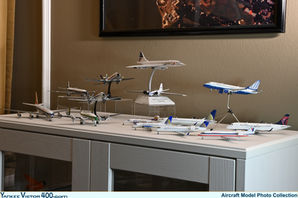
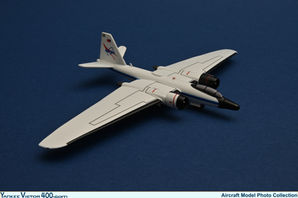


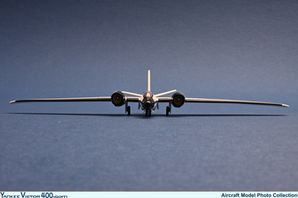


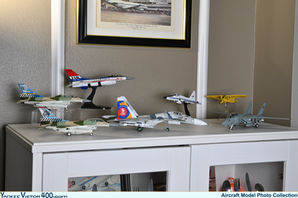

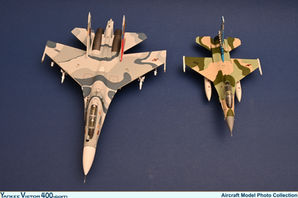
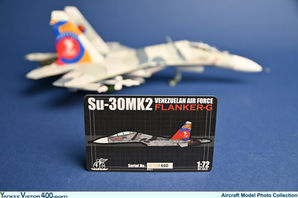
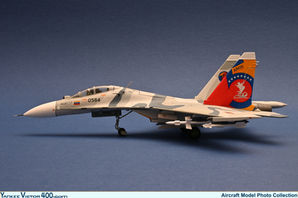










Comments